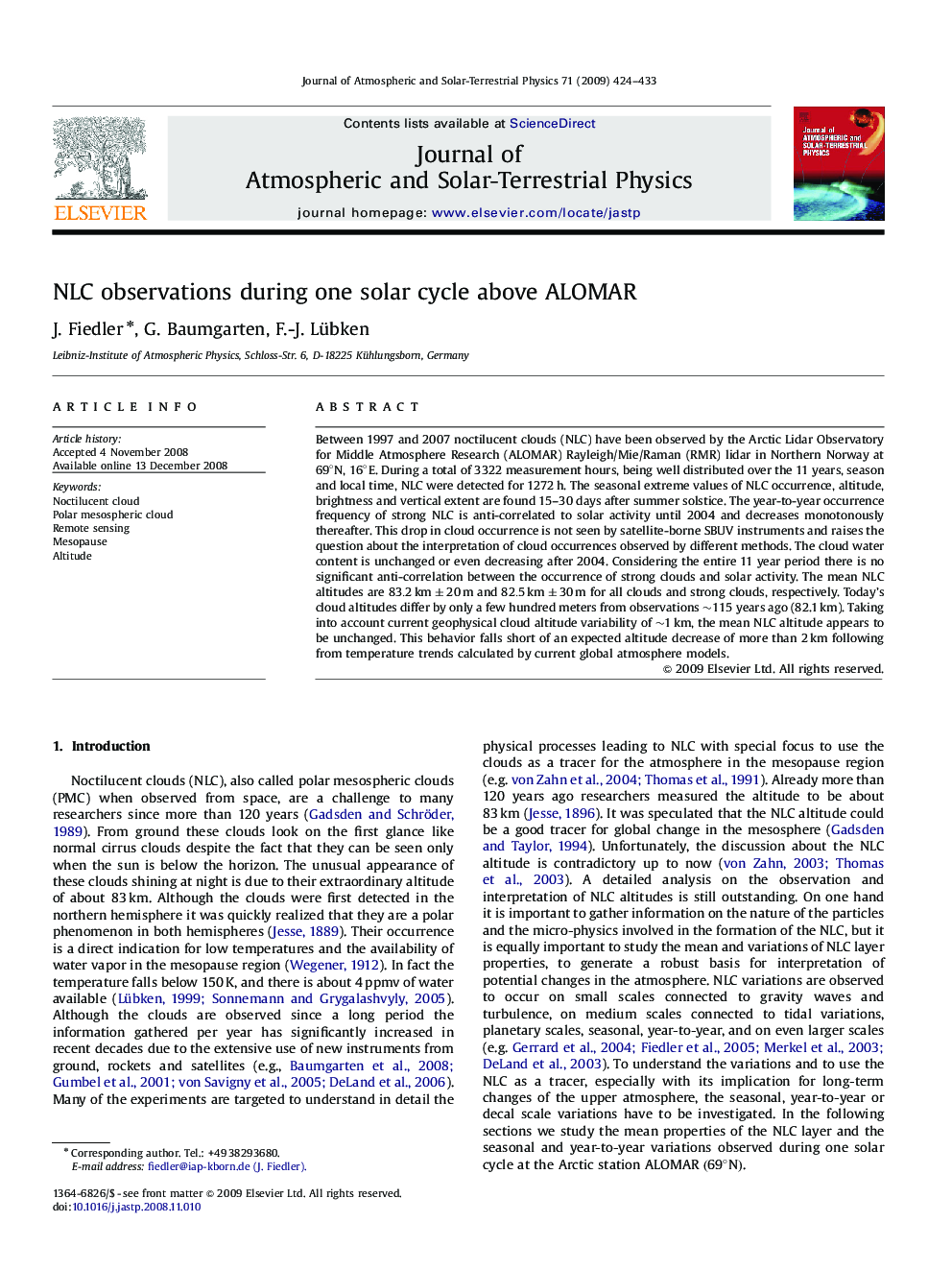| Article ID | Journal | Published Year | Pages | File Type |
|---|---|---|---|---|
| 1777583 | Journal of Atmospheric and Solar-Terrestrial Physics | 2009 | 10 Pages |
Between 1997 and 2007 noctilucent clouds (NLC) have been observed by the Arctic Lidar Observatory for Middle Atmosphere Research (ALOMAR) Rayleigh/Mie/Raman (RMR) lidar in Northern Norway at 69∘N69∘N, 16∘E16∘E. During a total of 3322 measurement hours, being well distributed over the 11 years, season and local time, NLC were detected for 1272 h. The seasonal extreme values of NLC occurrence, altitude, brightness and vertical extent are found 15–30 days after summer solstice. The year-to-year occurrence frequency of strong NLC is anti-correlated to solar activity until 2004 and decreases monotonously thereafter. This drop in cloud occurrence is not seen by satellite-borne SBUV instruments and raises the question about the interpretation of cloud occurrences observed by different methods. The cloud water content is unchanged or even decreasing after 2004. Considering the entire 11 year period there is no significant anti-correlation between the occurrence of strong clouds and solar activity. The mean NLC altitudes are 83.2km±20m and 82.5km±30m for all clouds and strong clouds, respectively. Today's cloud altitudes differ by only a few hundred meters from observations ∼115∼115 years ago (82.1 km). Taking into account current geophysical cloud altitude variability of ∼1km, the mean NLC altitude appears to be unchanged. This behavior falls short of an expected altitude decrease of more than 2 km following from temperature trends calculated by current global atmosphere models.
